Digital transformation is touching upon various physical objects, making them smart and powerful. The engine for such devices is embedded software that is an integral part of the rapidly developing IoT ecosystem.
This article is dedicated to the tools for embedded software development. We will explain what an embedded system is and what types of tools are needed to build one. You will also learn about the most popular embedded system software development tools currently available on the IT market.
Speed up delivery and ensure high quality of your embedded software by making SaM Solutions your development vendor.
What is Embedded Software?
If traditional desktop software is written for computers, embedded software is integrated into non-computer hardware to control its functions. The hardware is represented by various monitoring devices, machines, sensors, wearables and practically every piece of modern electronics. Embedded technology, together with networks and information technologies, constitutes the Internet of Things systems and is widely used in medicine, manufacturing, appliances, the automotive industry, transportation and aviation.
The core difference between desktop and embedded programming lies in their purposes. General computers are used for multiple purposes, which is why their software can be installed on numerous devices and can be easily reconfigured. Embedded software, on the contrary, serves a single purpose and is created specifically for a certain device it should run on.
In addition, embedded solutions are developed taking into account environmental factors such as temperature or humidity that may influence devices and affect their performance.
An embedded system is a combination of a hardware module and a software module.
To assemble hardware, the following basic components are needed:
- A power supply
- SoM (System-on-a-Module)/SoC (System-on-a-Chip) — a combination of microprocessors, peripherals, memory, I/O on a single board
To create software, the following basic components are needed:
- Operating systems (Windows CE, Yocto Linux, ThreadX, Nucleus RTOS)
- Languages (C, C++, Python, JavaScript, etc.)
- Tools (IDE, PDK, SDK, compiler toolchains, hardware and software debuggers (e.g. ST-Link, Segger))
Schematically, an embedded system can be depicted as follows:
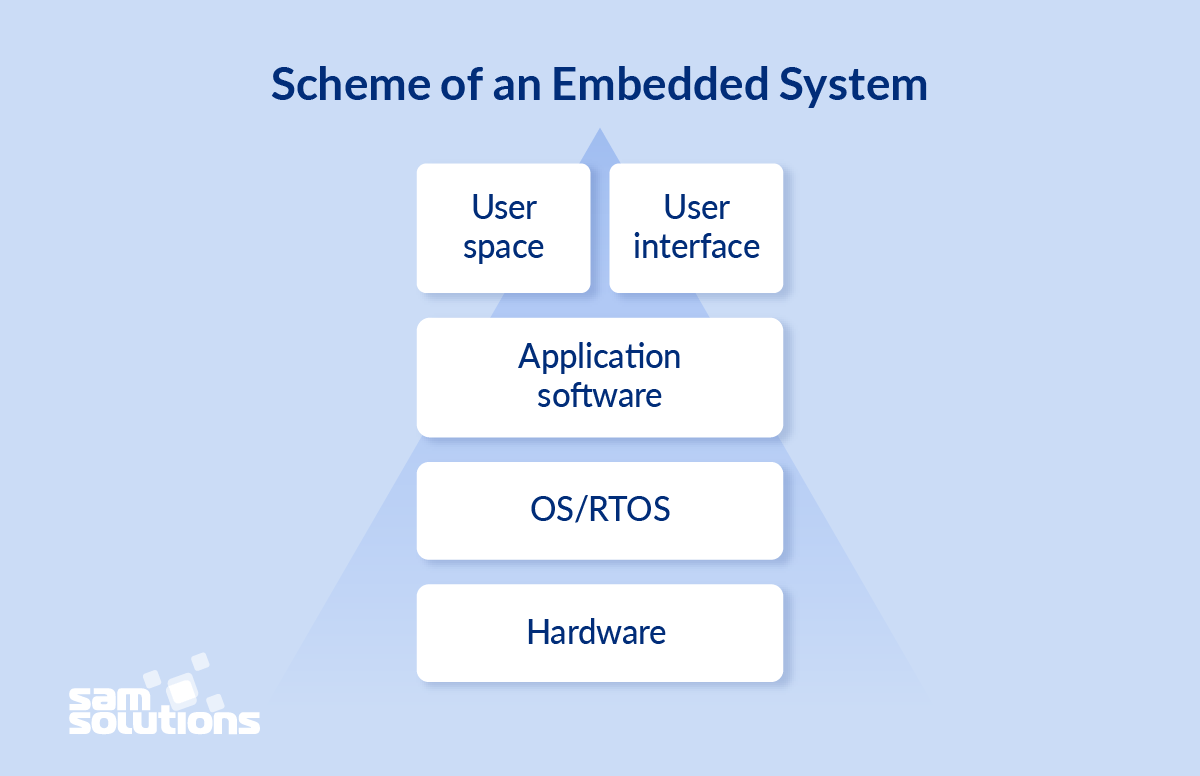
Types of Embedded Software Development Tools
The following is the list of the types of embedded software development tools with their description.
Editor
A text editor is the first tool you need to begin creating an embedded system. It is used to write source code in programming languages C and C++ and save this code as a text file.
A good example of a text editor is Geany. This is a small and lightweight environment that uses the GTK+ toolkit. Geany supports C, Java, PHP, HTML, Python, Perl, Pascal and other types of files.
Basic functions of Geany:
- Syntax highlighting
- Code folding
- Symbol name auto-completion
- Snippets
- Auto-closing of XML and HTML tags
- Code navigation
Compiler
Source code is written in a high-level programming language. A compiler is a tool for transforming the code into a low-level machine language code — the one that a machine can understand.
Keil C51 is a popular compiler that creates apps for 8051 microcontrollers and translates source code written in the C language.
Assembler
The function of this tool is to convert a human-written code into a machine language. In comparison with a compiler, which can do so directly, an assembler initially converts source code into object code, and then to a machine language.
GNU Assembler (GAS) is widely used for Linux operating systems and can be found in the Macintosh tools package.
Debugger
This is a critical tool for testing. It goes through the code and eliminates bugs and errors, notifying places where they occur. Precisely, debuggers pinpoint the lines where issues are found, so programmers can address them quickly.
A good debugger tool is IDA Pro that works on Linux, Windows and Mac OS X operating systems. It has both free and commercial versions and is highly popular among developers.
Linker
Traditionally, code is written into small pieces and modules. A linker is a tool that combines all these pieces together, creating a single executable program. GNU ld is one of the linker tools.
Emulator
An emulator is a replication of the target system with identical functionality and components. This tool is needed to simulate software performance and to see how the code will work in the real-time environment. Using emulators, programmers can change values in order to reach the ideal performance of the code. Once the code is fully checked, it can be embedded in the device.
Integrated Development Environment (IDE)
Talking about the list of embedded software development tools, we cannot but mention integrated development environments. All the above-mentioned tools are needed for creating your embedded software. But it would be extremely inconvenient to use them separately, adding another layer of complexity to the project.
Hence, to simplify the development process, it is highly recommended to use integrated environments. IDE is software that provides a set of necessary tools in one package.
Embedded Software Development Tools List
For your information and convenience, we have compiled an embedded software development tools list, gathering the most popular solutions in the market.
1. PyCharm

A Czech company JetBrains created this IDE specifically for developers working with Python. Nevertheless, PyCharm is suitable for cross-platform development as it supports JavaScript, CoffeeScript, TypeScript, Cython, SQL, HTML/CSS, AngularJS, Node.js, template languages, and more, together with Windows, macOS and Linux operating systems.
PyCharm provides everything you need for productive embedded software development:
- Intelligent code completion
- Error highlighting and fixing
- Automated code refactoring
- Easy project navigation
- Support for web development frameworks such as Django, Flask, Google App Engine, Pyramid, and web2py
- Integrated testing
- Remote development on virtual machines
PyCharm offers the community, professional and educational editions, proving to be a perfect tool for various programming purposes.
2. WebStorm
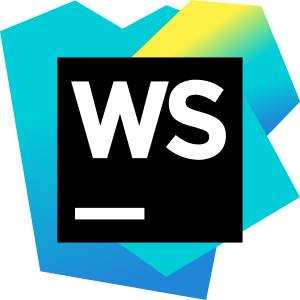
Another IDE from JetBrains is WebStorm, used for creating JavaScript, CSS and HTML solutions.
WebStorm performs autocompletion, on-the-fly code analysis, code navigation, refactoring, debugging and integration with version control systems. It also supports multiple nesting e.g. when a JS script is embedded in an HTML document, in which another HTML code is embedded, inside which JavaScript is embedded. The organization of information in these layers provides correct refactoring.
3. Qt Creator

Qt integrated development environment has a comprehensive set of libraries, APIs and tools to create software for embedded devices in C++, JavaScript and QML.
Features:
- Cross-compiling
- Autocompletion
- Syntax highlighting
- Virtual keyboard
- On-device debugging
- Functional safety
- 3D/2D user interfaces
The leading embedded systems manufacturers across more than 70 industries, including automotive, automation, medical, TV and STB, Internet of Things, mobile apps and more, choose Qt Creator to build their products.
4. MPLAB X
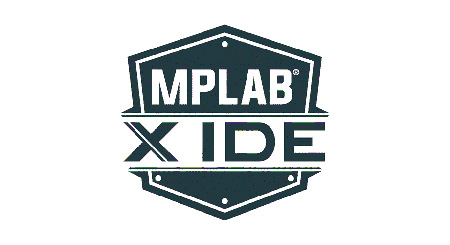
MPLAB X is the latest version of an integrated development environment MPLAB created by Microchip Technology company. The software is based on the open-source NetBeans platform and is designed to create applications for various types of PIC microcontrollers and digital signal controllers.
The software runs on a personal computer and includes cross-platform support for Windows, Mac OS and Linux. MPLAB X allows project managing, code writing, editing and debugging.
A host of previously requested features have been added to this version of the IDE, including C/C++ compilers, macros, third-party tools, complex breakpoints and added support for PIC, dsPIC, AVR, CEC and SAM microcontrollers.
The main advantages that may sway you in the direction of choosing this IDE are:
- Ease of use — you can easily customize the front panel and put frequently used tools there
- Auto-completion — this feature is used to complete known header files automatically, without having to type them in
- Mark occurrences — if you highlight any variable with the cursor, all the instances of this variable in the file are shown, which is extremely helpful in debugging
- Live syntax checker — this feature is able to detect common errors, reducing the total number of errors at the end of the compilation
- Dashboard window — contains useful information on the project properties
5. Visual Studio

A popular integrated development environment by Microsoft — Visual Studio — is used to build not only computer programs and mobile apps, but embedded software as well. The extension Visual C++ for IoT development enables programmers to debug native C/C++ code either locally on Windows, or on microcontrollers, or on remote Linux machines. Using Visual Studio for IoT, you can build, edit and debug devices running on Linux.
VisualGDB provides an interface between Visual Studio and the GNU toolchain to build and debug embedded firmware. Thus, you can configure your project by implementing third-party compilers and tools.
6. Eclipse

Initially, the Eclipse integrated development environment was created for Java applications, and now it is the most widely used solution by Java programmers. Nevertheless, Eclipse can work with other programming languages (Ada, ABAP, C, C++, C#, Python, PHP, etc.) via plug-ins.
A separate package — Eclipse IDE for Automotive Software Developers — contains tools and frameworks for quick and easy creation of embedded automotive software.
7. NetBeans

A free and open-source IDE for Java 8 development, NetBeans is supported by a large community of developers and users. It also encompasses PHP and C/C++ tools and allows for creating apps with CSS, JavaScript and HTML.
Basic NetBeans features:
- Fast and smart code editing
- Easy and efficient project management
- Rapid UI development
- Debugging
- Support for multiple languages
- Cross-platform support
- Rich set of plugins
8. MATLAB
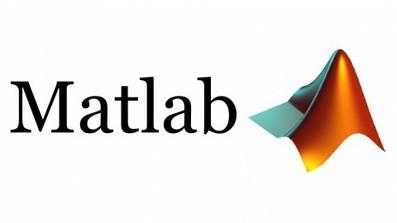
MATLAB is a package of tools and a programming language designed for numerical computing. Developers in different areas use MATLAB to create user interfaces, implement algorithms, work with data plots, functions, matrices, graphs, etc. This environment enables interfacing with programs written in C, C++, C#, Java, Python and other languages.
Additional software Simulink that comes with MATLAB is used to create simulations. The combination of MATLAB and Simulink is useful for embedded software developers, as it allows them to design and code an embedded system from prototyping to production.
The advantages are:
- Robust and easy-to-use debugging tools
- Rich and efficient library of mathematical and statistical functions
- A solid user community
- Well-developed literature on all tools
9. Arduino
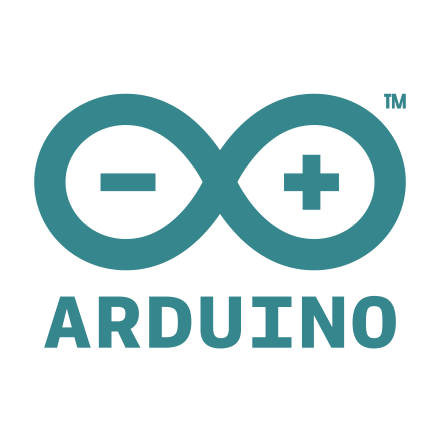
The open-source IDE Arduino helps create programs for Arduino microcontrollers. It provides a range of features and libraries that make the life of embedded programmers easier.
The main advantages are:
- Ready-to-use boards with all needed components
- Libraries with examples of codes
- Open-source and extensible hardware and software
- Cross-platform support for Windows, Mac OS and Linux
- Access to a large community
- Easy to learn and use
10. ARM Keil
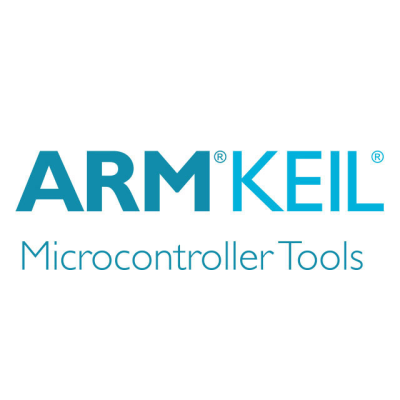
ARM Keil development tools provide a complete environment for creating embedded applications for the widest range of ARM-based devices. The software package includes leading C/C++ compilers, simulation models, debuggers, linkers, assemblers, middleware libraries.
In addition, ARM Keil offers evaluation boards for the most popular devices based on Cortex and ARM processors.
Advantages:
- Easy to learn and use
- Intuitive interface
- Integration with third-party tools
- Code templates
- Example projects
- Technical support by ARM experts
- Suitable both for professionals and beginners
There is no way to say which tool you should choose for creating embedded software, since their number is enormous. We may say that it all depends on the programmer’s skills and preferences, as well as on the project needs. In any case, all the above-mentioned tools help accelerate the development of embedded software.
Our Embedded Experience
Embedded development is among the core competencies SaM Solutions offers to its clients. We have successfully completed dozens of projects, both for large and small companies. The range of end-to-end services we offer includes:
- Embedded software development
- IoT solution development
- Custom firmware development
- Linux device driver development
The domains for which we create solutions encompass medical equipment, consumer electronics, infotainment systems, network appliances, servers, data storage systems and more.
SaM Solutions specialists have created a prototype of a predictive maintenance system that analyzes the state of an electric motor. The prototype is based on a Toradex board and can be effectively used for the automation of manufacturing processes. For more information on this solution, you can watch a webinar our specialists have brought off.
SaM Solutions, with its decades of experience in embedded software development, is a reliable partner for any embedded or firmware development project.
To Sum Up
Embedded systems and IoT solutions are applied in numerous areas and undoubtedly increase productivity and save expenses. At the same time, they add complexity to processes and create additional challenges for personnel. That’s why it’s crucial to find a reliable provider and choose the right development tools and frameworks for building a successful embedded project.
SaM Solutions is a reputable vendor of embedded services and can become a great partner for your company. We are able to combine cloud computing, IoT apps and physical objects into a smart ecosystem for the benefit of your enterprise. Contact us if you have any questions or want to discuss collaboration.



















 The Latest 15 Information Technology Trends in 2024
The Latest 15 Information Technology Trends in 2024 Top 10 Embedded Software Development Tools
Top 10 Embedded Software Development Tools IaaS vs. PaaS vs. SaaS: What’s the Difference?
IaaS vs. PaaS vs. SaaS: What’s the Difference? 10 Examples of Predictive Analytics
10 Examples of Predictive Analytics














 Web App Development Cost in 2025 [Key Price Factors]
Web App Development Cost in 2025 [Key Price Factors] 13 Best React Development Tools in 2025
13 Best React Development Tools in 2025 Top 10 Mobile App Development Trends 2025
Top 10 Mobile App Development Trends 2025 Top IoT Industry Trends in 2025
Top IoT Industry Trends in 2025 Java Web App Security: Everything You Need to Know
Java Web App Security: Everything You Need to Know
Thanks for sharing these valuable development tools and good skills, and I will apply them to my websites.
We’re so happy having stumbled across your web site, embedded software development tools is exactly everything people at my job are looking for. The up to date info on this this place is definitely needed and is going to benefit my business partners quite a bit productive information.
A lot of my department colleagues use MATLAB for their numerical work. It’s not something I personally use but they’ve all had good experiences with it. The built-in debugging tools are one of its best features (I’m told).
Started with Visual Studio a very long time ago, and switched over to MPLAB X for a special project my team started. For PIC microcontroller work, it operates good enough for our uses. Can also use it for digital signal controller work too.
Would’ve been cool to see something about Flutter listed here. It’s quickly becoming a very popular language. One of the best tools for it is Panache (as well as Supernova). If you’re into Flutter definitely check those two out.
Keil is a good compiler, pretty popular – but another option is SDCC (even though it can be a lot more expensive depending on your budget). It also depends which versions you’re using, and what you’re actually using it for.
Another good, basic text editor to mention is notepad++ – a lot of programmers use it (on the web-side of things at least). Very easy-to-use GUI and very streamlined UX. It’s perfect for doing some basic coding work.
Really good list of the top 10 embedded development tools. Was not aware of some of these tools/applications, but this article did a good job of explaining their uses and why I might need some of them in my stack.
Was looking for a good tool to get started in ARM-based devices (developing embedded applications for them). Seems that ARM Keil keeps getting suggested so going to have to try this one out.
I’ve been wanting to branch out into Arduino for a while, seeing it mentioned in this article just reminded me. The fact that it’s open source and has a huge community of users for support makes it an easy decision for me.
Eclipse is easily one of the best tools available for Java developers. Lots of programmers in my company also use it for C and PHP too, it’s a pretty versatile tool. Nice article, learned about some other tools I wasn’t familiar with.
Just starting out my journey in embedded development and this blog is definitely very helpful for me, appreciate the writers making this one. Always being recommended to try WebStorm and now I need to try it out.